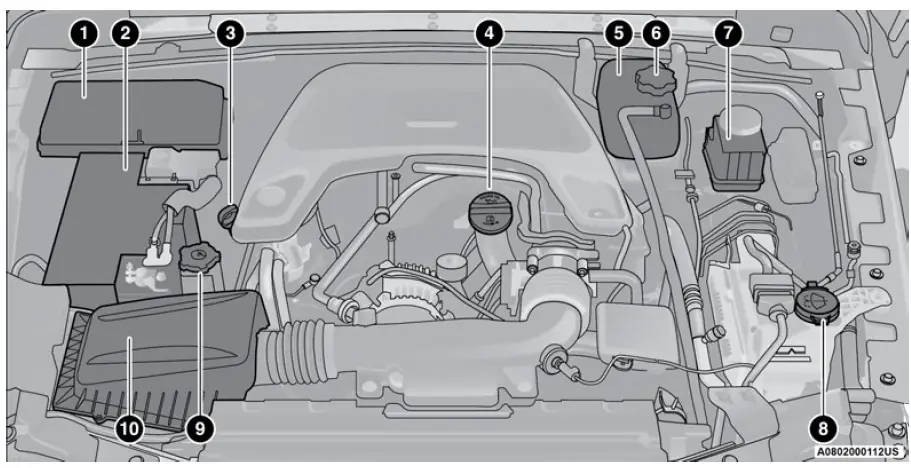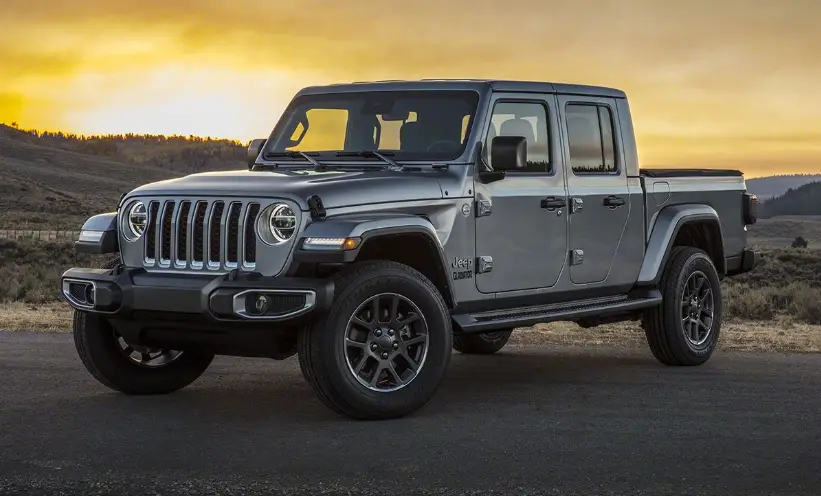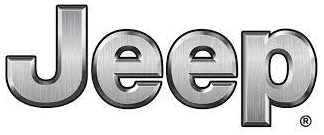2020 Jeep Gladiator Maintenance Schedule
The maintenance plan acts as a care map for the 2020 Jeep Gladiator, making sure that this iconic vehicle stays in top shape for many years to come. The maintenance plan is a thorough guide that Jeep carefully put together to keep the Gladiator in good shape. It was made to fit both the demands of everyday life and more adventurous trips. This schedule lists a number of important tasks and checks, from changing the oil to checking the most important systems. All of these are meant to improve the car’s performance, safety, and longevity. The maintenance schedule for the 2020 Jeep Gladiator strikes a careful mix between preventive and corrective actions. This shows that Jeep cares about both the vehicle’s abilities and the driver’s trust in it. By following this advice, fans can make sure that their Gladiator stays tough and reliable no matter what terrain or challenge they face.
SERVICING AND MAINTENANCE
SCHEDULED SERVICING
Your vehicle is equipped with an automatic oil change indicator system. The oil change indicator system will remind you that it is time to take your vehicle in for scheduled maintenance. Based on engine operation conditions, the oil change indicator message will illuminate. This means that service is required for your vehicle. Operating conditions such as frequent short-trips, trailer tow, or extremely hot or cold ambient temperatures will influence when the “Change Oil” or “Oil Change Required” message is displayed.
Severe Operating Conditions can cause the change oil message to illuminate as early as 3,500 miles (5,600 km) since last reset. Have your vehicle serviced as soon as possible, within the next 500 miles (805 km). On vehicles equipped with an instrument cluster display, “Oil Change Required” will be displayed and a single chime will sound, indicating that an oil change is necessary.
On vehicles not equipped with an instrument cluster display, “Change Oil” will flash in the instrument cluster odometer and a single chime will sound, indicating that an oil change is necessary. An authorized dealer will reset the oil change indicator message after completing the scheduled oil change. If a scheduled oil change is performed by someone other than an authorized dealer, the message can be reset by referring to the steps described under “Instrument Cluster Display” in “Getting To Know Your Instrument Panel” for further information.
NOTE: Under no circumstances should oil change intervals exceed 10,000 miles (16,000 km), 12 months or 350 hours of engine run time, whichever comes first. The 350 hours of engine run or idle time is generally only a concern for fleet customers.
Severe Duty All Models
Change Engine Oil at 4,000 miles (6,500 km) or 350 hours of engine run time if the vehicle is operated in a dusty and off-road environment, or is operated predominately at idle or only very low engine RPM. This type of vehicle use is considered Severe Duty.
Once A Month Or Before A Long Trip:
- Check engine oil level
- Check windshield washer fluid level
- Check the tire inflation pressures and look for unusual wear or damage, rotate at the first sign of irregular wear
- Check the fluid levels of the coolant reservoir, brake master cylinder, and power steering, and fill as needed
- Check function of all interior and exterior lights
MAINTENANCE PLAN
Required Maintenance Intervals
Refer to the maintenance plan on the following pages for the required maintenance intervals.
| At Every Oil Change Interval As Indicated By Oil Change Indicator System: |
| Change oil and filter |
| Rotate the tires
NOTE: Rotate at the first sign of irregular wear, even if it occurs before the oil indicator system turns on. |
| Inspect battery and clean and tighten terminals as required |
| Inspect the CV/Universal joints |
| Inspect brake pads, shoes, rotors, drums, hoses and parking brake |
| Inspect engine cooling system protection and hoses |
| Inspect exhaust system |
| Inspect engine air cleaner if using in dusty or off-road conditions |
| Inspect all door latches for presence of grease, reapply if necessary |
NOTE: Using white lithium grease, lubricate the door hinge joints twice a year to prevent premature wear.
|
Mileage or time passed (whichever comes first) |
20,000 |
30,000 |
40,000 |
50,000 |
60,000 |
70,000 |
80,000 |
90,000 |
100,000 |
110,000 |
120,000 |
130,000 |
140,000 |
150,000 |
| Or Years: | 2 | 3 | 4 | 5 | 6 | 7 | 8 | 9 | 10 | 11 | 12 | 13 | 14 | 15 |
|
Or Kilometers: |
32,000 |
48,000 |
64,000 |
80,000 |
96,000 |
112,000 |
128,000 |
144,000 |
160,000 |
176,000 |
192,000 |
208,000 |
224,000 |
240,000 |
| Additional Inspections | ||||||||||||||
| Inspect the CV/Universal joints. | X | X | X | X | X | X | X | X | X | X | X | X | X | X |
| Inspect front suspension, rear suspension, tie rod ends, and replace if necessary. | X | X | X | X | X | X | X | |||||||
| Inspect the front and rear axle fluid. | X | X | X | X | ||||||||||
| Inspect the brake linings, replace as necessary. | X | X | X | X | X | X | X | |||||||
| Adjust parking brake on vehicles equipped with four wheel disc brakes. | X | X | X | X | X | X | X | |||||||
| Inspect transfer case fluid. | X | X | X | |||||||||||
| Additional Maintenance | ||||||||||||||
| Replace engine air cleaner filter. | X | X | X | X | X | |||||||||
| Replace air conditioning/cabin air filter. | X | X | X | X | X | X | X | |||||||
| Replace spark plugs – 3.6L Engine.1 | X | |||||||||||||
| Flush and replace the engine coolant at 10 years or 150,000 miles (240,000 km), whichever comes first. |
X |
X |
||||||||||||
| Change the manual transmission fluid if using your vehicle for any of the following: trailer towing, snow plowing, heavy loading, taxi, police, delivery service (commercial service), off-road, desert operation or more than 50% of your driving is at sustained high speeds during hot weather, above 90°F (32°C). |
X |
X |
X |
X |
X |
|||||||||
| Change transfer case fluid if using your vehicle for any of the following: police, taxi, fleet, or frequent trailer towing. |
X |
X |
||||||||||||
| Inspect and replace PCV valve if necessary. | X | |||||||||||||
| Change front and rear axle fluid if using your vehicle for police, taxi, fleet, off-road or frequent trailer towing. |
X |
X |
X |
- The spark plug change interval is mileage based only, yearly intervals do not apply.
WARNING
- You can be badly injured working on or around a motor vehicle. Do only service work for which you have the knowledge and the right equipment. If you have any doubt about your ability to perform a service job, take your vehicle to a competent mechanic.
- Failure to properly inspect and maintain your vehicle could result in a component malfunction and effect vehicle handling and performance. This could cause an accident.
HEAVY DUTY USE OF THE VEHICLE
Change engine oil at 4,000 miles (6,500 km) or 350 hours of engine run time if the vehicle is operated in a dusty and off-road environment or is operated predominately at idle or only very low engine RPM. This type of vehicle use is considered Severe Duty.
ENGINE COMPARTMENT
3.6L ENGINE

- Power Distribution Center (Fuses)
- Battery
- Engine Oil Dipstick
- Engine Oil Fill
- Engine Coolant Reservoir
- Engine Coolant Pressure Cap
- Brake Fluid Reservoir
- Washer Fluid Reservoir Cap
- Power Steering Fluid Reservoir Cap
- Engine Air Cleaner
CHECKING OIL LEVEL
To ensure proper lubrication of your vehicle’s engine, the engine oil must be maintained at the correct level. The engine oil level should be checked five minutes after a warmed up engine has been shut off. Checking the oil while the vehicle is on level ground will improve the accuracy of the oil level readings. Always maintain the oil level within the SAFE zone on the dipstick. Adding 1 quart (0.95 liters) of oil when the reading is at the bottom of the crosshatch zone will result in a reading at the top of the crosshatch zone on these engines.
CAUTION: Overfilling or underfilling the crankcase will cause aeration or loss of oil pressure. This could damage your engine.
ADDING WASHER FLUID
The fluid reservoir is located in the engine compartment. Be sure to check the fluid level at regular intervals. Fill the reservoir with windshield washer solvent only (not radiator antifreeze). When refilling the washer fluid reservoir, take some washer fluid and apply it to a cloth or towel and wipe clean the wiper blades; this will help blade performance. To prevent freeze-up of your windshield washer system in cold weather, select a solution or mixture that meets or exceeds the temperature range of your climate. This rating information can be found on most washer fluid containers.
WARNING
- Commercial windshield washer solvents are flammable.
- They could ignite and burn you. Care must be exercised when filling or working around the washer solution.
MAINTENANCE-FREE BATTERY
- Your vehicle is equipped with a maintenance-free battery.
- You will never have to add water, nor is periodic maintenance required.
WARNING
- Battery fluid is a corrosive acid solution and can burn or even blind you. Do not allow battery fluid to contact your eyes, skin, or clothing. Do not lean over a battery when attaching clamps. If acid splashes in eyes or on skin, flush the area immediately with large amounts of water. Refer to “Jump Starting Procedure” in “In Case Of Emergency” for further information.
- Battery gas is flammable and explosive. Keep flame or sparks away from the battery. Do not use a booster battery or any other booster source with an output greater than 12 Volts. Do not allow cable clamps to touch each other.
- Battery posts, terminals, and related accessories contain lead and lead compounds. Wash hands after handling.
- Vehicles with the Stop/Start system will be equipped with two batteries. Bot the main and the supplemental batteries must be disconnected to completely de-energize the 12 Volt electrical system.
- Serious injury or death could result if you do not disconnect both batteries. To learn how to properly disconnect, see an authorized dealer.
CAUTION
- It is essential when replacing the cables on the battery that the positive cable is attached to the positive post and the negative cable is attached to the negative post. Battery posts are marked positive (+) and negative (-) and are identified on the battery case. Cable clamps should be tight on the terminal posts and free of corrosion.
- If a “fast charger” is used while the battery is in the vehicle, disconnect both vehicle battery cables before connecting the charger to the battery. Do not use a “fast charger” to provide starting voltage.
- Vehicles with the Stop/Start system will be equipped with two batteries. Both the main and the supplemental batteries must be disconnected to completely de-energize the 12 Volt electrical system.
- If the negative battery cables are not isolated properly it can cause a potential power spike or surge in the system, resulting in damage to essential electrical components.
PRESSURE WASHING
CAUTION: Cleaning the engine compartment with a high pressure washer is not recommended. Precautions have been taken to safeguard all parts and connections however, the pressures generated by these machines is such that complete protection against water ingress cannot be guaranteed.
DEALER SERVICE
An authorized dealer has the qualified service personnel, special tools, and equipment to perform all service operations in an expert manner. Service Manuals are available which include detailed service information for your vehicle. Refer to these Service Manuals before attempting any procedure yourself.
NOTE: Intentional tampering with emissions control systems may void your warranty and could result in civil penalties being assessed against you.
WARNING: You can be badly injured working on or around a motor vehicle. Only do service work for which you have the knowledge and the proper equipment. If you have any doubt about your ability to perform a service job, take your vehicle to a competent mechanic.
FAQ
A maintenance schedule helps keep your Gladiator in optimal condition, preventing potential issues and ensuring reliable performance.
You can find the recommended maintenance schedule in the owner’s manual provided by Jeep.
The recommended interval for oil changes is typically around every 5,000 to 7,500 miles or as specified in the manual.
Air filter replacement intervals vary, but it’s generally recommended every 15,000 to 30,000 miles.
Tire rotation is typically recommended every 6,000 to 8,000 miles to ensure even tire wear.
Yes, transmission fluid replacement is necessary at specific mileage intervals, usually around every 30,000 to 60,000 miles.
Brake fluid replacement intervals can vary, but around every 2 to 3 years is common.
Brake pad and rotor inspection is often recommended every 10,000 to 15,000 miles.
Regularly check the coolant level and condition, especially before long trips. A full coolant flush is typically recommended every 2 to 3 years.
Spark plug replacement intervals vary, but every 30,000 to 100,000 miles is common.
Yes, regular inspection of belts and hoses is essential, usually every 30,000 to 60,000 miles.
Battery inspection is recommended at every oil change, while replacement might be needed every 3 to 5 years.
Cabin air filter replacement is typically recommended every 15,000 to 30,000 miles.
Yes, regular suspension system checks are important, especially after driving on rough terrain or off-road.
Regular exhaust system inspection is advisable every 15,000 to 30,000 miles.
Useful Link
View Full PDF: 2020 Jeep Gladiator |Auto User Guide
2020 Jeep Gladiator Fuses Instruction Guide


